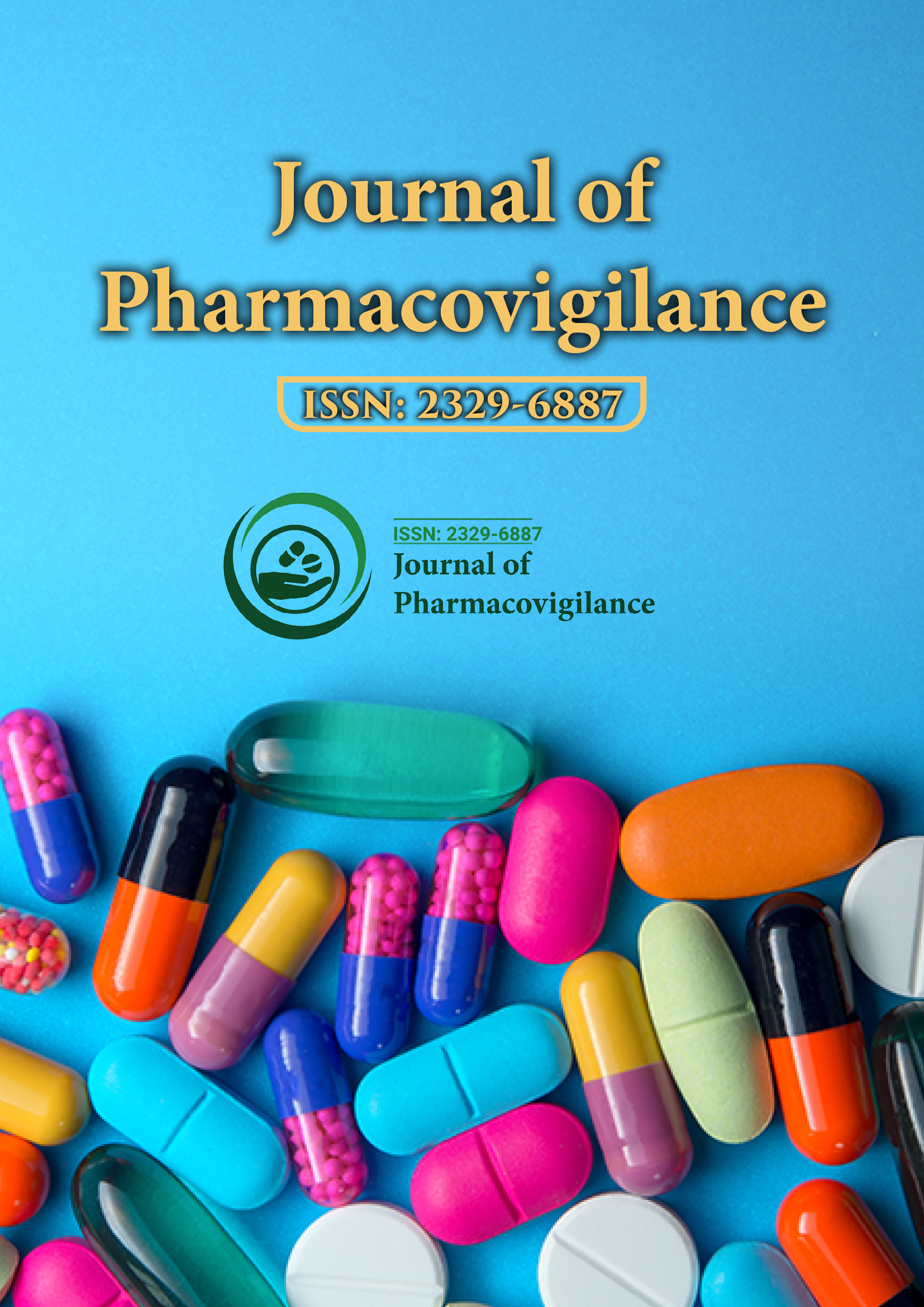Indexed In
- Open J Gate
- JournalTOCs
- The Global Impact Factor (GIF)
- RefSeek
- Hamdard University
- EBSCO A-Z
- OCLC- WorldCat
- Publons
- Euro Pub
- Google Scholar
Useful Links
Share This Page
Journal Flyer

Open Access Journals
- Agri and Aquaculture
- Biochemistry
- Bioinformatics & Systems Biology
- Business & Management
- Chemistry
- Clinical Sciences
- Engineering
- Food & Nutrition
- General Science
- Genetics & Molecular Biology
- Immunology & Microbiology
- Medical Sciences
- Neuroscience & Psychology
- Nursing & Health Care
- Pharmaceutical Sciences
Perspective - (2025) Volume 13, Issue 2
The Vital Role of Ongoing Drug Safety Observation in Healthcare
Lucas Everett*Received: 26-May-2025, Manuscript No. JP-25-29709; Editor assigned: 28-May-2025, Pre QC No. JP-25-29709; Reviewed: 11-Jun-2025, QC No. JP-25-29709; Revised: 18-Jun-2025, Manuscript No. JP-25-29709; Published: 25-Jun-2025, DOI: 10.35248/2329-6887.25.13.511
Description
The continuous observation of medication effects after their approval and availability to the public is a fundamental pillar of patient safety and effective healthcare delivery. While clinical trials conducted before approval provide crucial information about a drug’s efficacy and immediate safety, they cannot capture every potential adverse reaction. Many side effects or risks may only emerge after prolonged use or when the drug is taken by diverse populations in everyday clinical practice. Because clinical trials operate under controlled and idealized conditions, they cannot fully represent the complexity of real-world use. Therefore, ongoing post-marketing surveillance is essential for collecting detailed information on how medicines truly perform once they enter the broader market.
This system relies heavily on reports from healthcare professionals, patients, and pharmaceutical manufacturers who document any undesirable or unexpected experiences linked to medication use. These reports are collected and aggregated in safety databases, where pharmacovigilance experts analyze them for patterns or signals that could point to emerging risks. This constant vigilance enables the early identification of uncommon, delayed, or rare adverse effects that might otherwise go unnoticed until serious harm occurs. By detecting such signals promptly, regulators and healthcare providers can take appropriate actions to minimize risks and protect public health.
The effectiveness and reliability of this surveillance system largely depend on the willingness and ability of individuals to submit accurate, complete, and timely reports. Healthcare providers, who are often the first to observe drug-related side effects, must be aware of the importance of thorough documentation and communication regarding adverse events. Educational initiatives aimed at increasing awareness among clinicians help improve the quantity and quality of reported data. At the same time, patients themselves are becoming more engaged in the process; educating patients about recognizing possible side effects and encouraging them to report their experiences directly or through their healthcare providers enhances the comprehensiveness of safety data collection.
Simplifying the reporting process is another key factor in increasing participation. The development of digital platforms, online portals, and mobile applications has made it easier and faster for both healthcare professionals and patients to submit adverse event reports. Such accessible tools reduce barriers to reporting and broaden engagement, leading to a richer and more robust data pool for analysis. The more reports received, the greater the likelihood of identifying rare or unexpected safety concerns early.
The insights gained from these reports can have significant real-world impacts. In some instances, accumulated evidence from post-marketing surveillance has led to updates in drug labels, including clearer warnings, dosage adjustments, or new contraindications. These label changes provide clinicians and patients with improved guidance to use medications more safely. In more severe cases, if safety risks are substantial, regulatory authorities may impose restrictions on a drug’s use or, in rare circumstances, withdraw the medication from the market entirely. Such decisive actions underscore the critical role that continuous safety monitoring plays in preventing avoidable harm and protecting the public.
Technological advancements have revolutionized the way medication safety data are collected, managed, and analyzed. Integration of adverse event reports with electronic health records, pharmacy data, and other health information systems enables faster detection of potential safety issues. Specialized software tools can analyze complex, large-scale datasets to identify subtle patterns or trends that might not be obvious through traditional manual review. Moreover, international collaboration among regulatory agencies and healthcare organizations has become increasingly important. Sharing safety data across countries broadens the scope of surveillance, allowing for earlier detection of adverse effects that may be rare or specific to certain populations, thereby enhancing global drug safety management.
Conclusion
The ongoing observation of drug safety after market approval is an indispensable component of healthcare. Through continuous monitoring and assessment of medication effects in real-world use, stakeholders can identify risks early and take necessary steps to mitigate harm. This enduring commitment to patient safety not only safeguards individuals but also strengthens confidence in therapeutic options and supports the broader mission of delivering effective, responsible healthcare. Sharing safety data across countries broadens the scope of surveillance, allowing for earlier detection of adverse effects that may be rare or specific to certain populations, thereby enhancing global drug safety management.
Citation: Everett L (2025). The Vital Role of Ongoing Drug Safety Observation in Healthcare. J Pharmacovigil. 13: 511.
Copyright: © 2025 Everett L. This is an open-access article distributed under the terms of the Creative Commons Attribution License, which permits unrestricted use, distribution and reproduction in any medium, provided the original author and source are credited.

